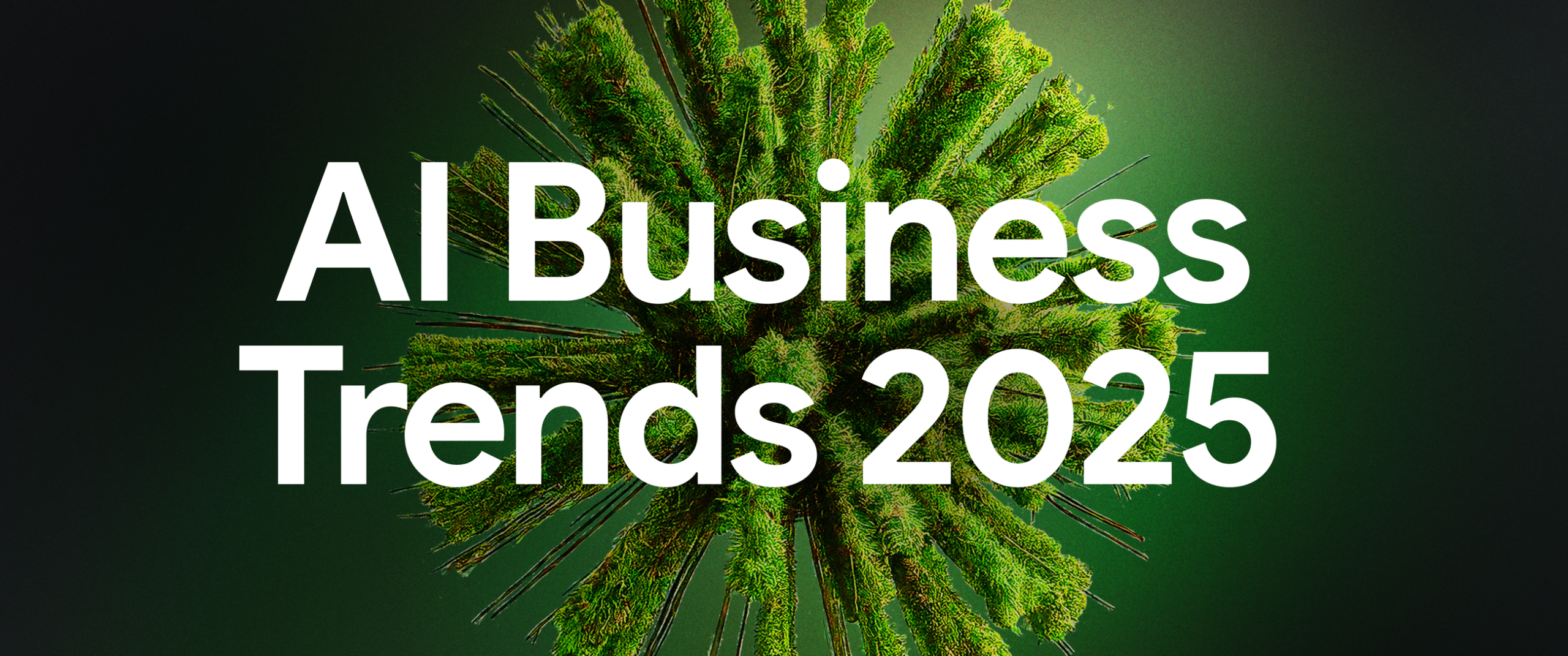Companies that ignore these shifts risk becoming irrelevant by year-end, according to new research from 2,500 global enterprise leaders.
Google Cloud’s latest research reveals five critical trends that will separate market leaders from laggards. Based on data from 2,500 global enterprise decision-makers, these insights show where smart money flows and which technologies actually deliver results.
These trends include:
1. Multimodal AI Takes Center Stage in Business Operations
Traditional AI systems process only text. Multimodal AI consumes everything now, from images, videos, audio, to documents simultaneously. This creates context awareness that mirrors human understanding.
The global multimodal AI market reaches $28.5 billion in 2025 and will hit $97.2 billion by 2037. Early adopters already see dramatic improvements in data analysis speed and decision accuracy.
Bayer uses multimodal AI to analyze medical imaging data, saving radiologists hours while improving patient outcomes. Prudential processes insurance claims 70% faster by combining document text with visual elements. These are production systems handling millions of transactions.
The technology works because it processes information like humans do. Instead of forcing businesses to translate complex data into simple text commands, multimodal AI reads spreadsheets, watches videos, and analyzes charts in one seamless workflow.
2. AI Agents Replace Simple Chatbots Across Industries
AI agents now plan, reason, and execute complex workflows without human intervention. 83% of organizations plan to deploy AI agents within 12 months.
Six distinct types emerge:
- Customer agents handle support tickets, process returns, and recommend products 24/7. Best Buy resolves customer issues 90 seconds faster with AI agents that manage subscriptions and reschedule deliveries.
- Employee agents boost workplace productivity by 15% on average, according to Stanford research. Woolworths deploys “Help me write” across 10,000 administrative employees, improving communication quality and speed.
- Creative agents generate marketing content, product descriptions, and campaign materials. PODS created 6,000 unique billboard headlines in 29 hours using AI agents that adapted messaging to each New York City neighborhood.
- Data agents analyze business intelligence and surface insights from vast datasets. Warner Bros. Discovery cut captioning costs by 50% while reducing processing time by 80%.
- Code agents accelerate software development with automated bug fixes and feature additions. Tuning achieved 33% developer productivity gains using AI coding assistants.
- Security agents detect threats and investigate incidents in real-time, reducing breach response times from days to minutes.
Multi-agent systems represent the next evolution. Instead of single AI agents handling individual tasks, multiple specialized agents collaborate to complete complex business processes without human coordination.
3. Enterprise Search Becomes Conversational and Visual
Employees waste 2.5 hours daily searching for information. AI-powered enterprise search eliminates this productivity drain by understanding natural language queries and processing multiple data formats simultaneously.
The enterprise search market grows from $5.8 billion today to $12.9 billion by 2031. Organizations invest because conversational search delivers immediate ROI through faster decision-making and reduced training costs.
Snap deployed multimodal search in their chatbot and saw 2.5x higher user engagement. Mayo Clinic gave researchers access to 50 petabytes of clinical data through AI search, accelerating medical research across multiple languages.
Modern search systems use vector databases and large language models to understand query intent rather than matching keywords. This enables complex questions like “Show me Q3 sales reports for products launched after the pricing change” instead of hunting through folders with cryptic file names.
4. Customer Experience Becomes Invisible Through AI Integration
The best customer service feels effortless. AI makes this possible by resolving issues before customers notice problems exist. Predictive analytics identify potential service disruptions, while conversational AI handles routine requests instantly.
Customer service ranks as the top priority for 55% of organizations implementing generative AI. The investment pays off: companies with superior customer loyalty deliver 282% higher shareholder returns over 10 years compared to 81% for average performers.
Alaska Airlines built “Careline,” an AI destination search that helps travelers plan vacations and find flight deals through natural conversation. KDDI Corporation developed AI-powered advertisement planning that improves marketing accuracy through persona matching, delivering significant click-through rate improvements.
The technology solves persistent customer experience problems:
- Omnichannel consistency: 75% of customers use multiple channels during service interactions. AI agents maintain context across touchpoints.
- Real-time sentiment analysis: AI monitors emails, social media, and chat interactions to gauge customer satisfaction instantly.
- Personalized interactions: 71% of consumers expect personalized experiences. AI analyzes purchase history, browsing behavior, and preferences to deliver relevant recommendations.
5. AI Security Tools Counter Sophisticated Cyber Threats
Cybercriminals use AI to create more effective attacks. Organizations fight back with AI-powered security systems that detect threats faster than human analysts.
Data breach costs increased 10% in 2024 to average $4.88 million globally. By 2028, Gartner predicts 50% of enterprises will adopt anti-disinformation security features, up from less than 5% in 2024.
AI security applications include:
- Threat detection: Automated systems scan network traffic for unusual patterns indicating potential breaches
- Incident response: AI agents investigate security alerts and contain threats within minutes instead of hours
- Vulnerability assessment: Machine learning identifies system weaknesses before attackers exploit them
- Fraud prevention: Financial institutions use AI to detect counterfeit documents and manipulated photos in real-time
Palo Alto Networks created a 24/7 AI security assistant using Google’s Gemini that improves response times and agent efficiency. Apex Fintech reduced threat detection time from hours to seconds with AI-powered security operations.
33% of security professionals cite skills gaps as the biggest barrier to AI implementation. Organizations need staff who understand both cybersecurity and artificial intelligence capabilities.
Implementation Strategy for Business Leaders
Successful organizations won’t pick just one, but they’ll integrate multiple AI capabilities into comprehensive business strategies.
Start with clear use cases tied to measurable outcomes. Multimodal AI works best for businesses with complex data sources like manufacturing sensors or medical records. AI agents deliver immediate value in customer service and internal operations. Enterprise search transforms knowledge-intensive industries like consulting and research.
Early AI adopters already dominate their markets and continue pulling ahead of traditional competitors. Organizations that delay implementation early may find themselves permanently behind industry leaders.
Google Cloud’s research shows AI maturity becoming a key indicator of economic health. Governments revise policies and education systems to support AI-driven growth. This creates a feedback loop where AI-advanced companies access better talent, infrastructure, and market opportunities.
Conclusively, we all should agree now that AI adoption isn’t optional anymore. The question now is, which technologies should you implement first and how quickly can you scale them across operations.
READ FULL REPORT HERE















